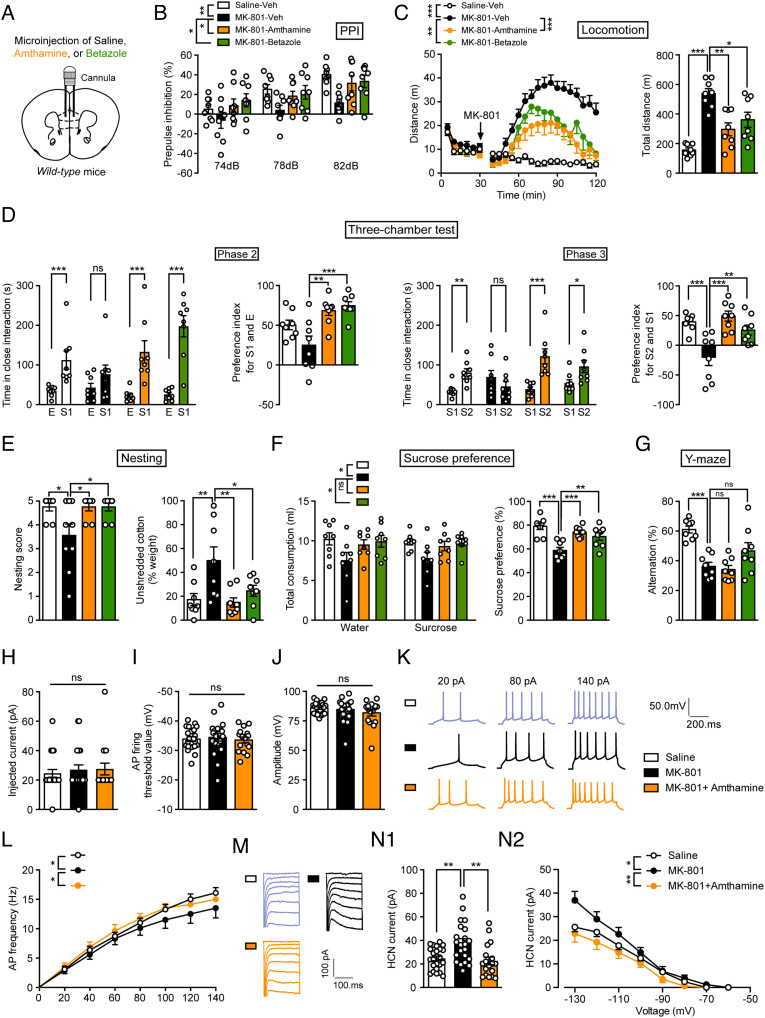Fig. 6.
Histamine H2R agonists rescue schizophrenia-like behaviors induced by MK-801. (A) Abridged general view of the position of the cannula. (B–G) Sensorimotor gating ability, locomotion, social behavior, hedonic function, and cognitive behavior of WT mice treated with saline, amthamine, or betazole after chronic exposure to MK-801. n = 8 mice for each group. (B) Percentage of PPI of the auditory startle reflex under 74, 78, and 82 dB prepulse intensities. (C) Distance traveled in the open field every 5 min (Left) and the total distance traveled in the open field (Right). (D) Time in close interaction and preference index for a gender-matched stranger mouse (S1) and empty wire cage (E) in phase 2 and for a new gender-matched stranger mouse (S2) and S1 in phase 3. (E) The nesting score (Left) and the percentage of the weight of unshredded cotton (Right) in a nest-building test. (F) Total consumption of water or sucrose (Left) and the sucrose preference (Right) within a 48-h period. (G) Percentage of correct alternation in a Y-maze. (H–N) The electrophysiological properties of mPFC glutamatergic neurons in WT mice treated with saline, MK-801, or MK-801 combined with amthamine. (H–J) Action potential (AP) properties, namely (H) the injected current inducing the first AP, (I) AP firing threshold, and (J) AP amplitude for three groups of mice. (K) Representative AP firing patterns in mPFC glutamatergic neurons. (L) Frequency of APs in mPFC glutamatergic neurons evoked by injected currents ranging from 0–140 pA. (M) Representative hyperpolarization-activated Ih currents mediated by HCN channels in mPFC glutamatergic neurons. (N1) HCN current evoked by −130 mV and (N2) by hyperpolarizing 20 mV steps from −130 mV to −60 mV. n = 24 cells from four saline mice, n = 22 cells from six MK-801 mice, n = 18 cells from five saline+amthamine mice. See also Dataset S1 for further statistical information.

